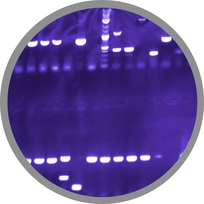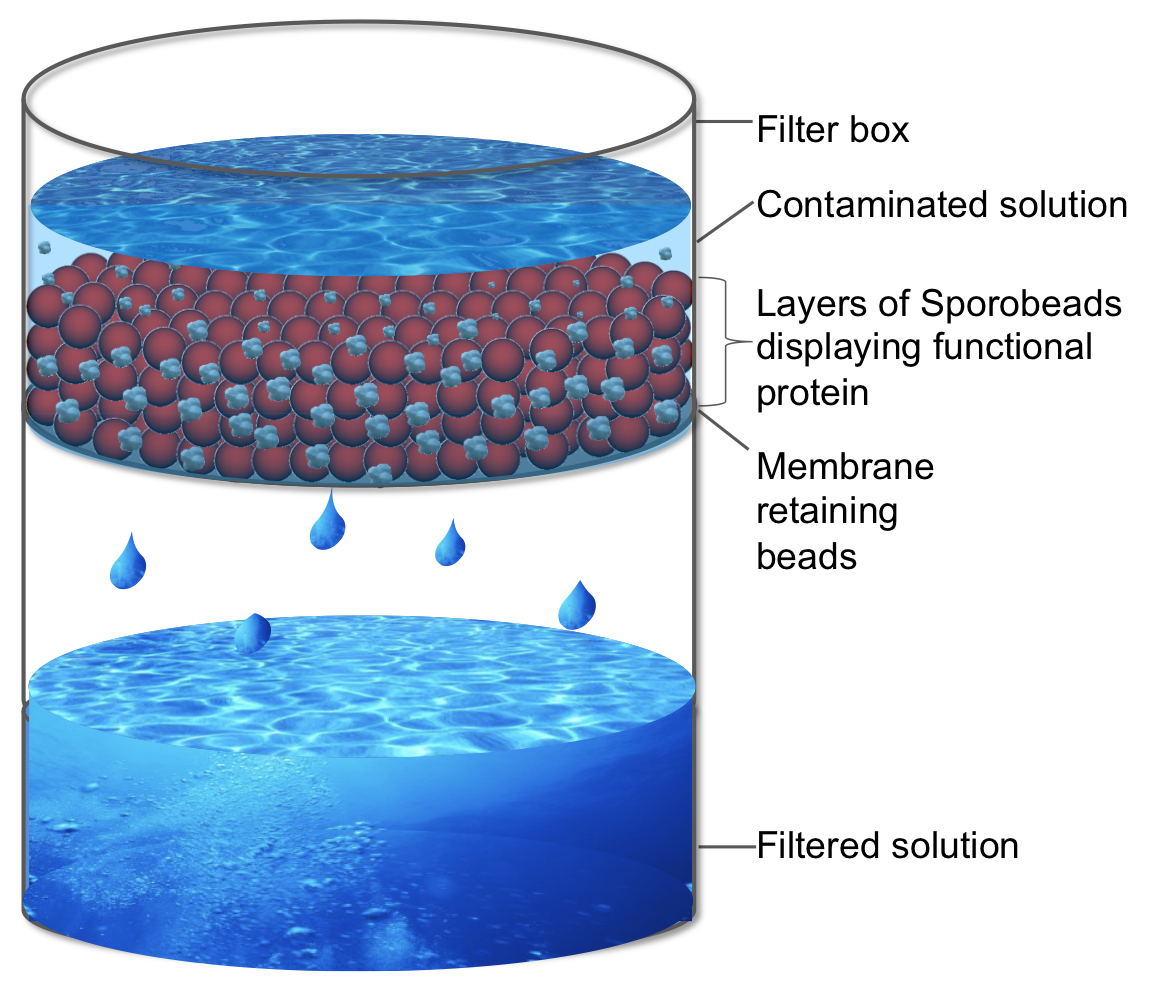Team:LMU-Munich/Application/Filtration
From 2012.igem.org
| (3 intermediate revisions not shown) | |||
| Line 6: | Line 6: | ||
==Filtration== | ==Filtration== | ||
| - | |||
| - | <p align="justify">One example of such a | + | <p align="justify">Our '''Sporo'''beads can be used to purify water from heavy metal ions, toxins and plastic by expressing proteins on their surface that specifically bind such targets.</p> |
| + | |||
| + | <p align="justify">One example of such a binding protein could be CPX-'''Sporo'''beads.[http://partsregistry.org/wiki/index.php/Part:BBa_I728500 CPX] is a peptide developed by the [https://2007.igem.org/MIT 2007 MIT iGEM team], which is extremely hydrophobic, and thus capable of binding microparticles of polystyrene from water. The excessive use of disposable plastic and the lack of universal recycling programs has led to the [http://www.ncbi.nlm.nih.gov/pubmed/22610295 pollution of the world's oceans]. In the ocean, large pieces of plastic litter are ground by sea currents and degraded by UV radiation into microscopic pieces, so called "plastic plankton," which is consumed by fish, filter feeders, and other marine organisms. Such plastic uptake can lead to poisoning, sterility and death.</p> | ||
| Line 28: | Line 29: | ||
| - | <p align="justify">In huge filter systems CPX-'''Sporo'''beads, which cannot germinate ([https://2012.igem.org/Team:LMU-Munich/Germination_Stop]'''Germination'''STOP), could be put into place to | + | <p align="justify">In huge filter systems, CPX-'''Sporo'''beads, which cannot germinate ([https://2012.igem.org/Team:LMU-Munich/Germination_Stop]'''Germination'''STOP), could be put into place to filter microscopic plastic particles out of the water. Such specific filtration would be superior to blanket filtration systems, which also remove living phytoplankton important to ocean ecosystems. To prevent the beads from being released into the sea and to ensure that the plastic is removed from the water, the '''Sporo'''beads could be attached to membranes in these filter systems. In this case, the '''Sporo'''beads would need to not only display CPX but also a membrane binding or spore binding protein on their surface.</p> |
| Line 37: | Line 38: | ||
{| width="100%" cellpadding="20" | {| width="100%" cellpadding="20" | ||
|[[File:LMU Arrow purple BACK.png|right|80px|link=Team:LMU-Munich/Application]] | |[[File:LMU Arrow purple BACK.png|right|80px|link=Team:LMU-Munich/Application]] | ||
| - | |[[File:LMU Arrow purple NEXT.png|left|80px|link=Team:LMU-Munich/Protein_Screening]] | + | |[[File:LMU Arrow purple NEXT.png|left|80px|link=Team:LMU-Munich/Application/Protein_Screening]] |
|} | |} | ||
Latest revision as of 16:46, 26 October 2012

The LMU-Munich team is exuberantly happy about the great success at the World Championship Jamboree in Boston. Our project Beadzillus finished 4th and won the prize for the "Best Wiki" (with Slovenia) and "Best New Application Project".
[ more news ]


Filtration
Our Sporobeads can be used to purify water from heavy metal ions, toxins and plastic by expressing proteins on their surface that specifically bind such targets.
One example of such a binding protein could be CPX-Sporobeads.[http://partsregistry.org/wiki/index.php/Part:BBa_I728500 CPX] is a peptide developed by the 2007 MIT iGEM team, which is extremely hydrophobic, and thus capable of binding microparticles of polystyrene from water. The excessive use of disposable plastic and the lack of universal recycling programs has led to the [http://www.ncbi.nlm.nih.gov/pubmed/22610295 pollution of the world's oceans]. In the ocean, large pieces of plastic litter are ground by sea currents and degraded by UV radiation into microscopic pieces, so called "plastic plankton," which is consumed by fish, filter feeders, and other marine organisms. Such plastic uptake can lead to poisoning, sterility and death.
|
In huge filter systems, CPX-Sporobeads, which cannot germinate ([1]GerminationSTOP), could be put into place to filter microscopic plastic particles out of the water. Such specific filtration would be superior to blanket filtration systems, which also remove living phytoplankton important to ocean ecosystems. To prevent the beads from being released into the sea and to ensure that the plastic is removed from the water, the Sporobeads could be attached to membranes in these filter systems. In this case, the Sporobeads would need to not only display CPX but also a membrane binding or spore binding protein on their surface.
 "
"




